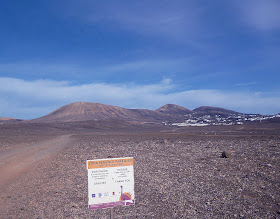It looks like Goldfinches are definitely on the move, and it doesn’t take much extra daylight to notice a turnover of birds in my garden. Catching them reveals the birds using the feeders are not the same individuals, and I caught another 7 today, 5 males and 2 females, plus 2 Starlings and 2 new Blackbirds.



I occasionally check Another Bird Blog stats, out of curiosity, but also to discover how and why people find my blog, to find any trends or which particular items generate more interest. Just once or twice I have noted searches done for “Goldfinch” that included the word “catch” or “catching” that led the search to my blog, one in particular from an Essex location. Recently I found the following on the Internet – an article from The Independent newspaper - July 2010.
“The Goldfinch’s sweet song and bright plumage has also made the tiny songbird prey to bird baiters who are entering urban woodlands with pots of glue to catch the birds, which they can then sell for up to £100 a time. The practice is becoming prevalent in east London, particularly among North African communities where having a songbird in the home is a tradition.
The methods employed to catch the birds are particularly cruel. The hunters put a bait bird in a cage in a bush or tree before smearing the branches with rodent glue. When the bait bird sings it attracts other goldfinches, which flock to inspect the intruder in their habitat. When they land on the branches they become stuck in the glue. Too tiny to free themselves, they can later be plucked off by the baiters. As goldfinches are particularly territorial they can refuse to sing when in an unfamiliar bush. To combat this, some baiters will burn out the bait bird's eyes with a hot needle so it is no longer aware of its surroundings.
Catching wild birds in Britain is illegal. Sergeant Rowan Healey, of Scotland Yard's wildlife crime unit, said: "In the Sixties and Seventies birds like these would be sold in pubs in East London. But as people in this country have become more environmentally aware we don't do that anymore. These birds are caught in places like Walthamstow Marshes or the Lea Valley and are sold from cages outside shops. The fact that they are on display makes it clear that some members of those communities are not aware that catching and selling the birds is illegal.
We need to educate the public that this is a crime. Even if people buy these birds innocently they are inadvertently breaking the law and could be prosecuted."
The catching of Goldfinches and other birds is carried out by bird ringers for purely scientific reasons and research with a permit issued under the Wildlife and Countryside Act 1990, and all captured birds are released immediately back to the wild. I would guess that if there are people in the wider community trying to find out how to catch Goldfinches illegally, it is reasonable to assume that they will use the Internet to try and discover ways of catching them. There is no way of preventing them reading blogs about bird ringing, or indeed birding blogs that name localities or identify concentrations of Goldfinches.
I post this information to make other bird watchers and ringers aware of the fact that the illegal trapping of Goldfinches may be taking place in the area they live, and that not everyone taking an apparent interest in bird ringing or bird watching activities may be doing so for genuine or legal reasons. There is nothing particularly new about this problem, but perhaps useful to remind ourselves occasionally that not all share our love to see birds wild and free, or wish to discover more about their fascinating lives.

Goldfinch

















































